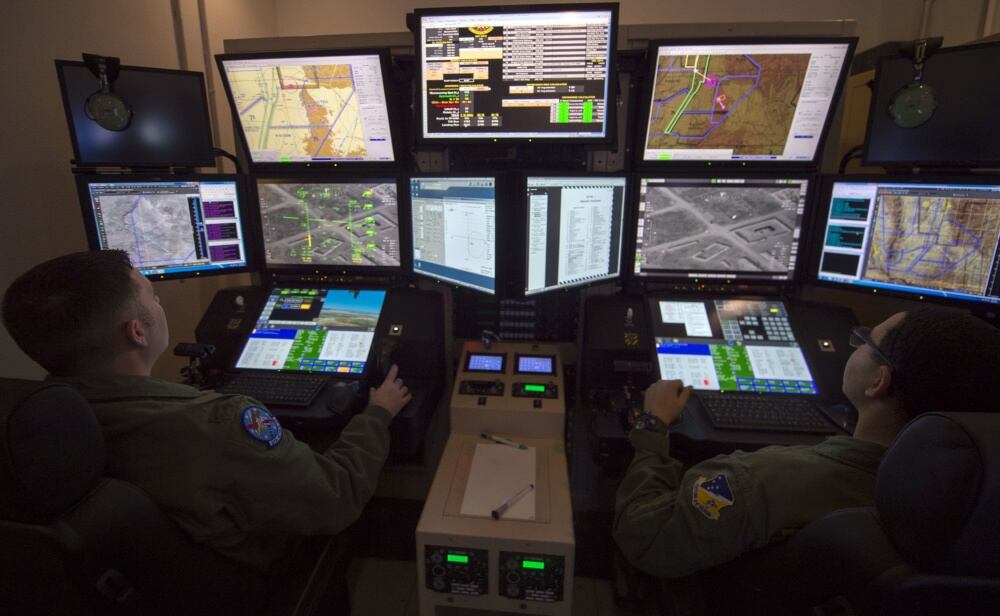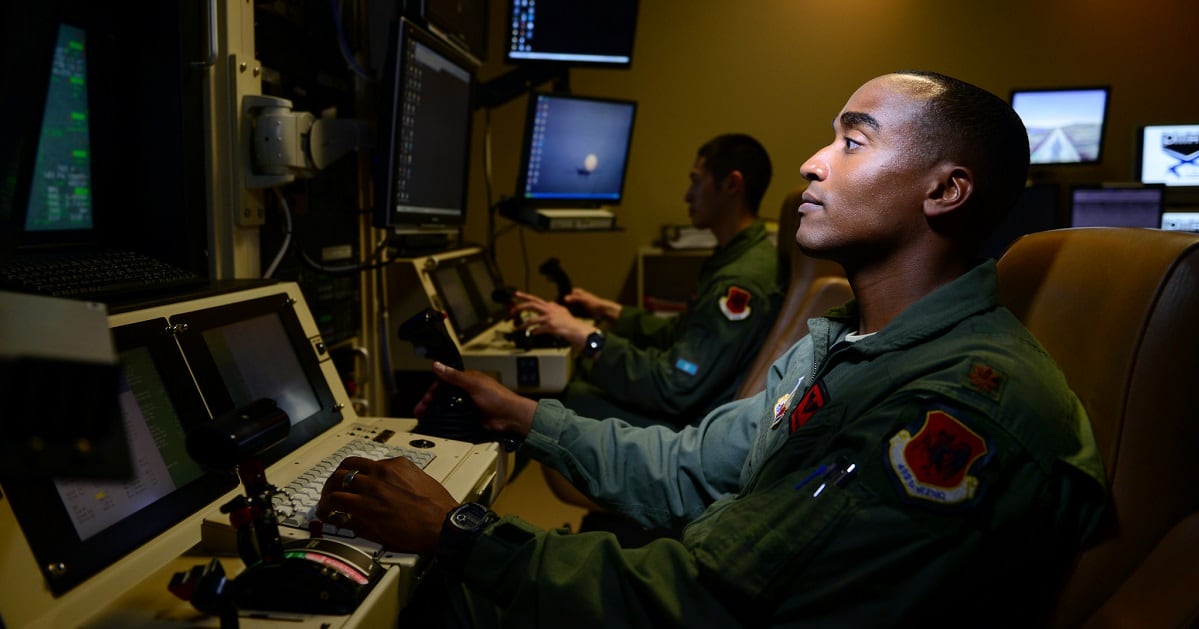The Air Force is facing an alarming shortage of pilots and sensor operators needed to fly its remotely piloted aircraft, the Government Accountability Office said in a report released Thursday.
This shortage in drone pilots and sensor ops is also making it harder for the Air Force to balance those airmen’s time engaging in combat operations with non-combat activities, GAO said in its report, “Unmanned Aerial Systems: Air Force Should Take Additional Steps to Improve Aircrew Staffing and Support.”
This issue has become increasingly important in the two decades since the Sept. 11 attacks, as the military has grown more and more reliant on drones, both for intelligence, surveillance and reconnaissance purposes and for airstrikes. In 2008, GAO said, the Air Force flew 33 combat lines — the measure of the service’s capability to fly an RPA near-continuously for 24 hours — but by 2015, that number had increased to 60.
RELATED

Since fiscal 2016, GAO said, the Air Force has consistently fallen short of how many RPA pilots and sensor ops it needs. In fiscal 2019, the Air Force was authorized to have 1,652 RPA pilots, but actually had only 1,320 pilots, a 20 percent shortfall. That’s not far from the 22 percent shortfall it had in fiscal 2015, GAO said.
While the number of assigned RPA pilots has grown since 2015, when there were 908 in the ranks, a corresponding increase in the authorizations and the requirements of the RPA community has essentially wiped out the benefits of the additional pilots.
But on the sensor operator side, the situation has grown even more dire. In 2016, there was a 10 percent gap between the number of sensor ops assigned and how many the Air Force was authorized. By 2019, the number of assigned sensor ops remained virtually unchanged at 919, but the authorizations had grown to 1,277, swelling the shortfall to 28 percent.
And between fiscal 2015 and fiscal 2019, GAO said, the Air Force only met its accession targets for RPA pilots in one year, and never met its targets for bringing on new sensor ops.

Some Air Force leaders said they are worried about the retention of RPA pilots,according to the GAO. Air Combat Command expects to have to replace 30 percent of RPA pilots each year due to attrition.
The unrelenting pace of combat operations — without the “dwell time” at home other airmen typically receive after deployments to break things up — and the unchanging environments RPA pilots work in is also burning them out and hurting retention.
“People join the Air Force to see and do things, not to be exposed to constant combat operations in less than appealing circumstances,” GAO said.
As a result, RPA pilots often transfer to the Air National Guard or separate entirely, according to the government watchdog A lack of opportunities for training and career advancement also hurts retention. For example, there is only one wing commander at Creech Air Force Base in Nevada, but hundreds of RPA pilots, severely limiting their chances to move up in their careers.
The Air Force is also having problems retaining sensor ops, the report said, because private contractors pay two to four times as much as the service can. This essentially makes the Air Force “a pipeline for RPA personnel to become government contractors,” GAO said. Nearly half of the sensor operators surveyed expressed some or great dissatisfaction with their compensation.
Training new RPA pilots and sensor operators at the formal training unit at Holloman Air Force Base in New Mexico has also been hamstrung by staffing shortages, GAO said, and the Air Force has not completely figured out how many active-duty instructors it needs.
Longstanding quality of life issues have also not been adequately addressed, GAO said. The solutions to problems that have not yet been put into place include shorter rotation schedules for shifts, granting medical personnel and chaplains clearance to meet with RPA personnel in their secured facilities, more opportunities for spouses, and more childcare support.
Many RPA pilots said their continuous rotations to new shifts caused sleep problems, which caused significant fatigue both at home and at work, and disrupted their chances to spend time with family and friends.
The review focused on the MQ-9 Reaper community, which is by far the largest in the Air Force.
Stephen Losey is the air warfare reporter for Defense News. He previously covered leadership and personnel issues at Air Force Times, and the Pentagon, special operations and air warfare at Military.com. He has traveled to the Middle East to cover U.S. Air Force operations.




